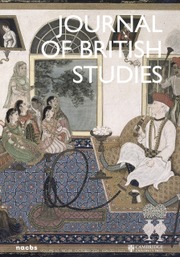Bronach C. Kane's much-anticipated book explores the workings of recall and memory in the witness testimony of men and women who appeared before English church courts from the thirteenth through the fifteenth centuries. This is a fascinating subject, deftly handled. Drawing on both medieval and modern theories of memory, Kane uses the ways witnesses in litigation recollected events in their testimony to peel back layers of medieval people's thinking about their social ties, their relationship to authority, the spaces and environments they inhabited, and their place in the world. As the title suggests, gender fundamentally shaped how past events and processes were narrated. Kane's nuanced and intersectional analysis of the construction of these accounts of the past helps explain the profound embeddedness of patriarchy in English society. Patriarchal assumptions underpinned not only overt evaluations of men's and women's activities and status, where we might expect to find them, but also much more subtly in how people described rural landscapes, urban streets, and domestic spaces.
Kane pursues the analysis over seven chapters, bookended by an introduction and conclusion. In the first chapter, Kane considers the twelfth- and thirteenth-century origins of the ecclesiastical court system that developed in the later medieval period. Kane ties the emphasis in high medieval pastoral theology on introspective examination of conscience to the techniques church court officials used to draw out testimony (asking witnesses to connect memories of clothes worn or weather to their recollections of their activities, for instance).
Ecclesiastical authorities’ evaluations of gender differences in memory—that in general men's remembrances were more authoritative, but that women had areas of “memory expertise” related to childbirth and family marriage—provide a connection to the second chapter. There Kane focuses on gender differences in the shape and reception of men's and women's testimony over marriage, defamation, testaments, tithe and land disputes, and the many other matters over which the church courts had purview. In general, women's testimony was much more likely to be cast into doubt than was men's, so that litigants were much less likely to call upon women to act as witnesses than men. As Kane notes, however, women could sometimes formulate strategies to increase the credibility of their words. These tactics were employed not only in court but outside in anticipation of potential legal action: women deliberately called upon those present at important transactions to keep that moment in their memory, for instance. If women could counteract, to some extent, the perception of their weaker and less credible remembrances, not all men were believed either: social subordination and poverty could also diminish men's perceived trustworthiness.
Chapters 3 and 4 treat the “embodied nature of remembrance.” Memories connecting bodily sensations, especially pain, with the matters about which they testified were more prominent in the testimony of women and non-elite men. Vivid descriptions of domestic violence and of the travails of childbirth especially marked women's testimony, while for men it was the pain and sometimes bodily trauma of heavy work and travel that appeared more frequently. The association of female experience with corporeal sensation—a broad feature of medieval intellectual culture, inherited from classical culture—paradoxically served both to paint women's recollections as inherently fickle and to imbue women's memories of childbirth especially as the product of especial expertise, “a particularly feminine source of agency that allowed women to negotiate social and legal expectations” (135). In chapter 5, Kane moves from women's knowledge of the childbed to their role as keepers of family memory. Tying her analysis to previous work on elite women's memorial function in high medieval families, Kane notes that women's testimony about family relationships was often more detailed and bilateral, including, for instance, female ancestors whom male deponents tended to omit.
In chapter 6, Kane examines the virtually complete exclusion of women from litigation involving customs and rights. Clearly men (especially the more locally prominent) were the authorized speakers of customary knowledge, even if women can be glimpsed occasionally on the margins of the testimonies upholding or even shaping local practices. In the final chapter, Kane examines how memories were imbued with their location in landscapes and the built environment, “material environments that carried gendered meaning” (212). Rural places, Kane finds, were largely gendered male, as men's ownership and use of agricultural land was so tightly imbricated with thinking about the countryside that women's occupation of that space seemed out of place. Urban environments, on the other hand, were more diverse and fluid, so that “towns and cities were far more likely than rural areas to be inflected with memories of women's working and social lives” (243).
In Kane's hands, the witnesses’ depositions are never treated as transparent windows into the “medieval mind.” One of the most important parts of her book is her analysis of the depositions as encounters between ecclesiastical officials and witnesses, produced for legal purposes and shaped by the exigencies of the particular lawsuit and by the assumptions of the authorities who considered them. The subtlety of her analysis nonetheless elucidates the complex workings of power and social connection in late medieval England.


